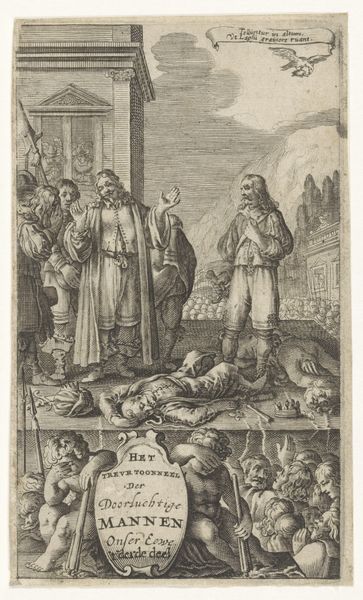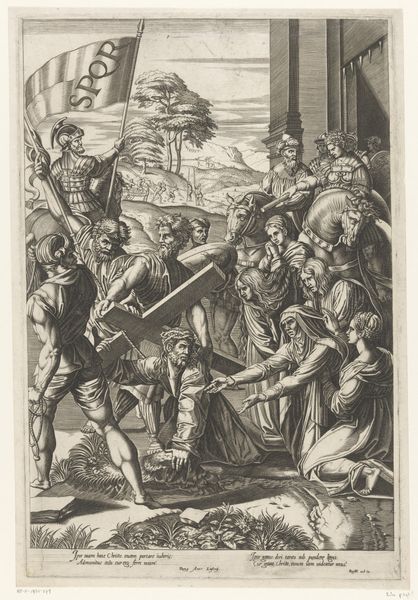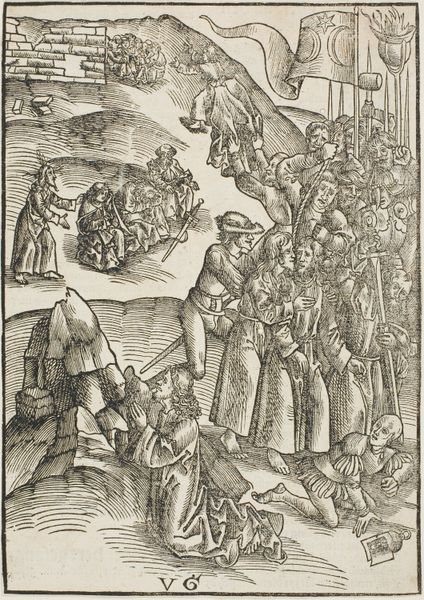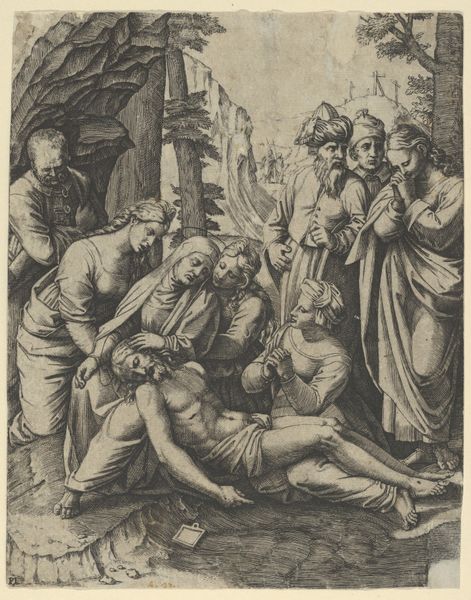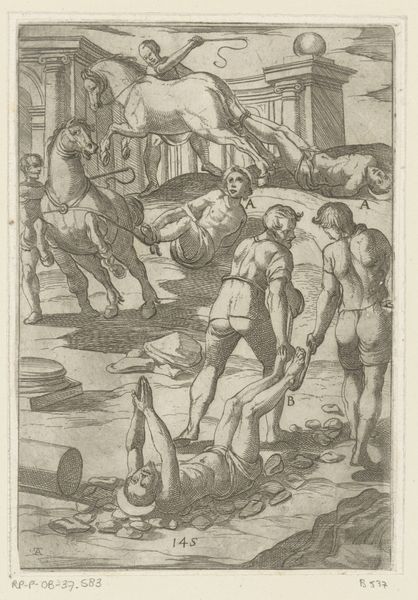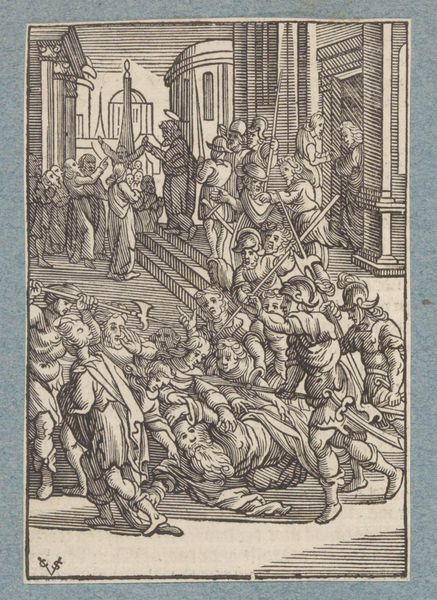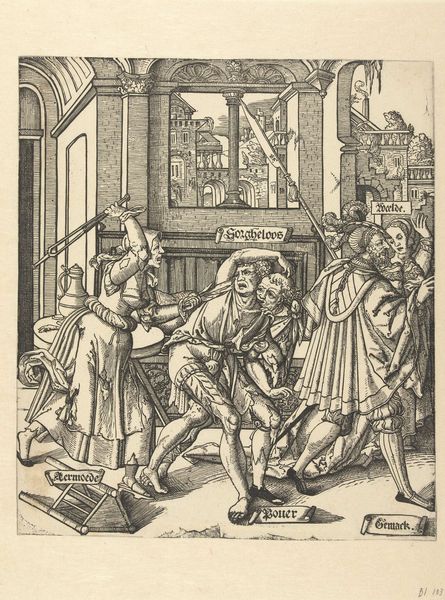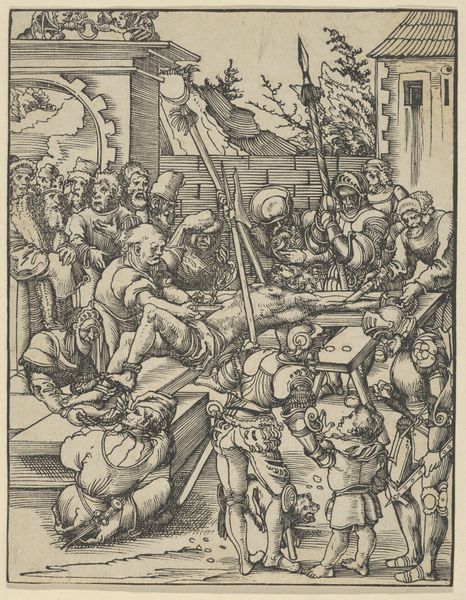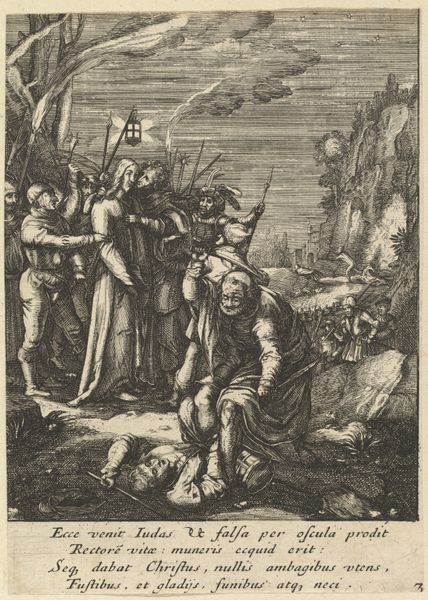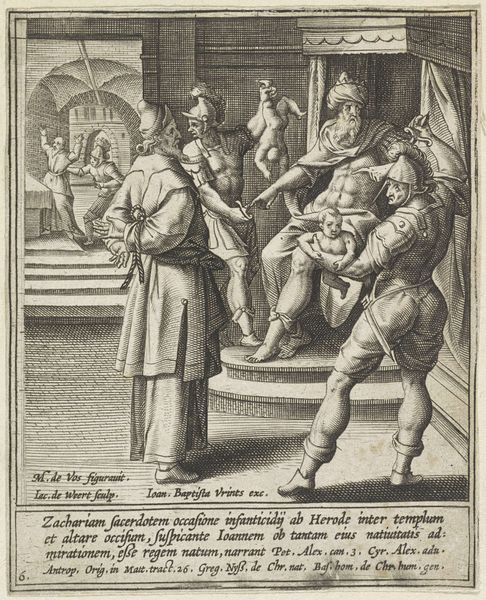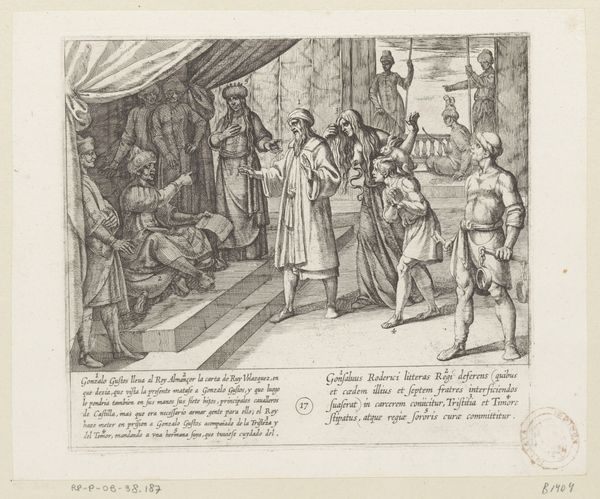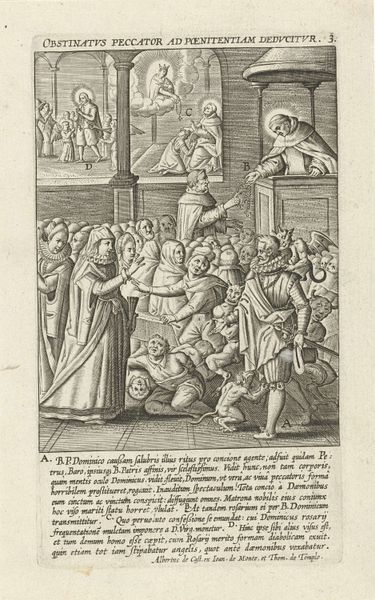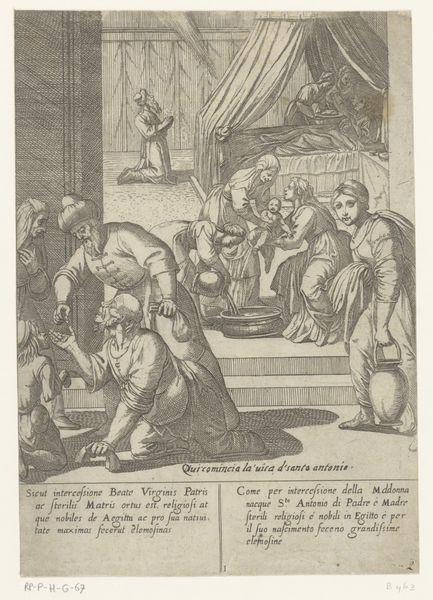
H. Antonius bezoekt christenen die gevangengenomen zijn door Maximilianus 1598
0:00
0:00
print, engraving
#
baroque
# print
#
figuration
#
history-painting
#
engraving
Dimensions: height 231 mm, width 163 mm
Copyright: Rijks Museum: Open Domain
Curator: Antonio Tempesta created this engraving, "H. Antonius bezoekt christenen die gevangengenomen zijn door Maximilianus," around 1598. It's currently housed in the Rijksmuseum. My first impression is a blend of stark violence and a strange stillness in the architectural backdrop. Editor: It feels rather brutal, doesn't it? The foreground practically seethes with movement as a beheading takes place, contrasted sharply with those serene, almost theatrical figures observing in the background. Like a play within a play! Curator: Exactly. Tempesta has carefully structured the composition. Notice how the strong diagonal of the executioner's sword bisects the scene, drawing the viewer's eye both to the immediate violence and the more detached reactions of the onlookers, including the emperor figure and, notably, Saint Anthony in the courtyard. Editor: Saint Anthony, looking on with… is that pity? He seems disconnected, almost like a ghost. Makes me think, are we really witnessing martyrdom, or a cold political display sanctioned by both earthly and, apparently, heavenly powers? Curator: The figures certainly embody different positions on faith and power. The unflinching gaze of the Roman soldiers juxtaposed with Saint Anthony's contemplative stance underscores the moral complexities at play. Editor: And those meticulous lines—Tempesta really carves out a palpable sense of tension through the contrasts in shading, right? The way light falls across the victim’s body versus the dense shadow behind the throne, very theatrical, yet viscerally impactful. I can almost feel the blade. Curator: This stark chiaroscuro, characteristic of Baroque aesthetics, heightens the dramatic effect. Consider how the engravings' linear precision enhances the gruesomeness, paradoxically framing it within an almost academic rendering. It’s a visual paradox. Editor: It is a chilling commentary on power, belief, and how easily cruelty gets normalized, neatly packaged in exquisite draftsmanship! An affecting look at a torturous moment framed with such striking... elegance. Curator: Yes, a meditation on moral quandaries encased in elegant baroque style and impressive craft—a study in contrasts, indeed.
Comments
No comments
Be the first to comment and join the conversation on the ultimate creative platform.

